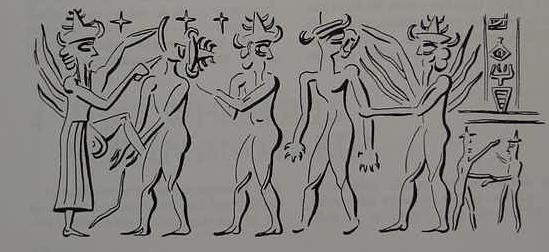Below, two "Fiery Gods" appear with flames erupting from their shoulders in the below cylinder seal, one on the viewer's far left, slits the throat of another god, while the other on the viewer's far right restrains by the arm a god with a demonic face. (cf. fig. 53. P. 54. Othmar Keel. The Symbolism of the Biblical World, Ancient Near Eastern Iconography and the Book of Psalms. New York. The Seabury Press. 1978)
